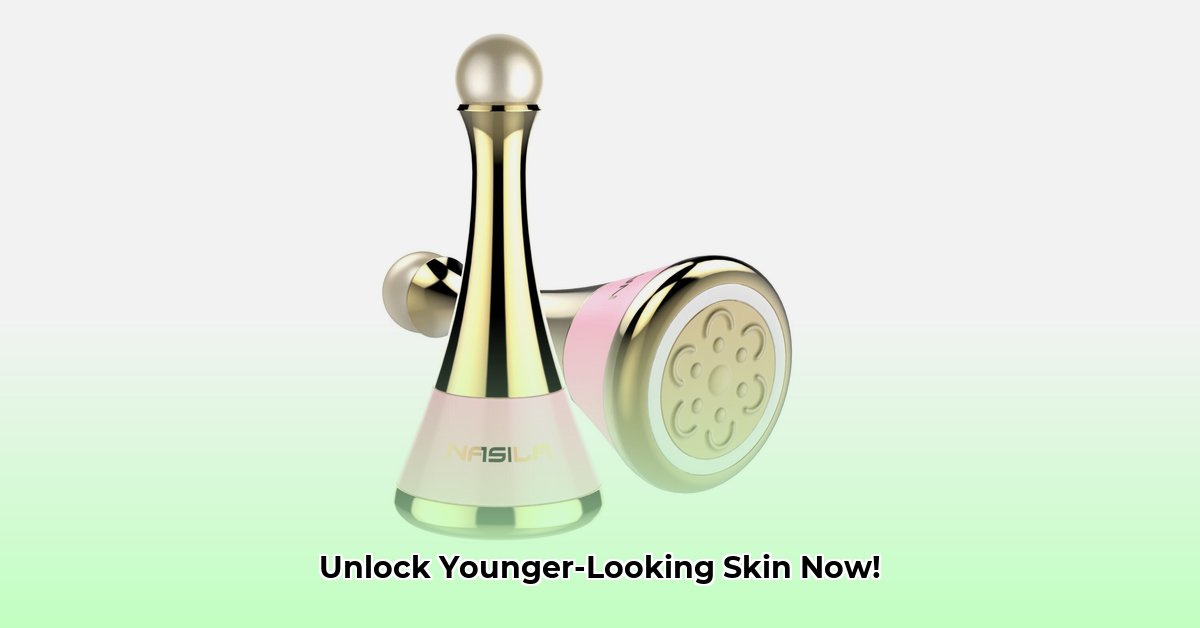
Dreaming of tighter, more youthful-looking skin? You're not alone! Many South Africans are looking for ways to improve their facial skin tone and reduce the appearance of sagging. This guide provides a clear and concise overview of the various huidverstrakking gezicht (face skin tightening) options available, helping you make an informed decision. For further skincare information, check out this helpful resource: skincare guide.
Understanding Facial Skin Laxity
Before exploring treatment options, it's essential to understand why our skin loses its firmness. As we age, our bodies produce less collagen and elastin – the proteins responsible for skin elasticity. Think of it like a worn-out elastic band; it loses its ability to bounce back. Sun exposure significantly accelerates this process, highlighting the importance of daily sunscreen use, even on cloudy days. Genetic factors and weight fluctuations can also contribute.
Non-Surgical Face Skin Tightening Options
Several effective non-surgical procedures can tighten facial skin with minimal downtime. These are ideal for those seeking subtle improvements or avoiding surgery's recovery period.
Laser Treatments: Different lasers stimulate collagen production, improving skin tone and texture. Some lasers provide more dramatic results but require more downtime; others offer more subtle improvements with minimal recovery. Your specialist will help determine the best option for you.
High-Intensity Focused Ultrasound (HIFU): This uses ultrasound energy to heat and stimulate collagen deeper in the skin, creating a lifting effect. It's non-invasive (no incisions) and offers good results, although perhaps less dramatic than a surgical facelift.
Microneedling with Radiofrequency (RF): Tiny needles create micro-injuries, triggering collagen production, while radiofrequency energy further tightens the skin. It's relatively quick with minimal downtime but may cause some minor discomfort.
Injectables (Dermal Fillers and Skin Boosters): These don't directly tighten skin but add volume, reducing the appearance of sagging. Think of it as providing support from within, creating a more lifted look. These are often targeted to specific wrinkle areas.
Surgical Face Skin Tightening: When Surgery is an Option
For significant skin laxity, a surgical facelift offers more dramatic and long-lasting results. However, it requires a longer recovery period and carries more risks than non-surgical procedures. It's a more involved operation, requiring a longer recovery time. This is most suitable for more advanced cases of skin sagging.
Choosing the Right Treatment: A Personalized Approach
Selecting the best treatment depends on individual needs and preferences. Consider these factors:
Severity of Sagging: Minor sagging might respond well to non-invasive options, while more significant laxity might benefit from surgery.
Budget: Non-surgical treatments are generally less expensive upfront, but multiple sessions might be needed. Surgical facelifts involve higher initial costs.
Downtime: Surgical facelifts require significant recovery time, while most non-surgical procedures allow a quicker return to normal activities.
Desired Outcome: Be realistic about your expectations and discuss your goals with your doctor to ensure alignment.
Isn't it important to carefully weigh the long-term costs against the potential benefits? Many people find that the non-surgical options offer a convenient pathway, while others prioritise a more sustained result from surgical options.
Treatment Comparison: A Quick Glance
This table offers a simplified comparison; individual results can vary.
| Treatment | Effectiveness | Downtime | Cost | Potential Side Effects |
|---|---|---|---|---|
| Laser (Nd:YAG) | Moderate | Minimal | Medium | Mild redness, swelling |
| Laser (Fractional CO2) | High | Moderate | High | More significant redness, swelling |
| HIFU | High | Minimal | Medium-High | Mild discomfort, possible bruising |
| Microneedling with RF | Moderate | Minimal | Medium | Mild redness, swelling, bruising |
| Injectables (Fillers/Boosters) | Moderate to High | Minimal | Medium-High | Bruising, swelling, rare allergic reactions |
| Surgical Facelift | Very High | Significant | Very High | Surgical risks, including infection, scarring |
Long-Term Cost-Effectiveness: A Key Consideration
The long-term cost effectiveness of each treatment must be evaluated. Non-surgical methods may require multiple sessions, increasing overall expenditure, while surgical procedures, despite higher upfront costs, provide longer-lasting results. Individual factors, such as age and skin type, further influence the overall cost calculation.
"The choice between surgical and non-surgical options depends heavily on the patient's budget and desired outcome," explains Dr. Aisha Patel, a leading dermatologist in Johannesburg. "It's about finding a balance between the cost of the procedure and its longevity."
Your Next Step: Consult a Professional
This guide is for informational purposes only and should not replace professional medical advice. Consult a qualified dermatologist or plastic surgeon for a personalized assessment and treatment plan. They will consider your individual needs, health history, and goals to recommend the most appropriate and cost-effective option for you. Don't hesitate to ask questions! Your informed choice will contribute to your skin's journey towards rejuvenation.